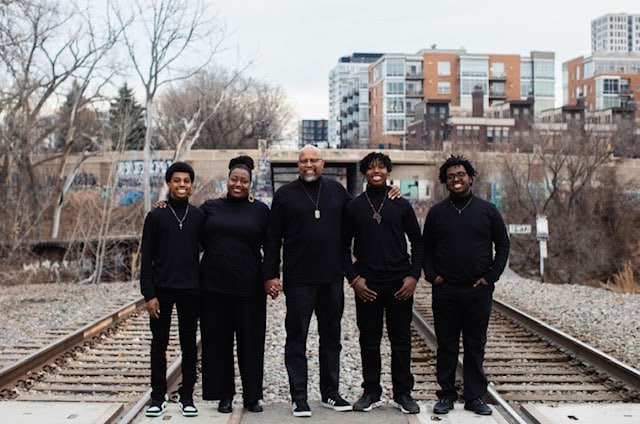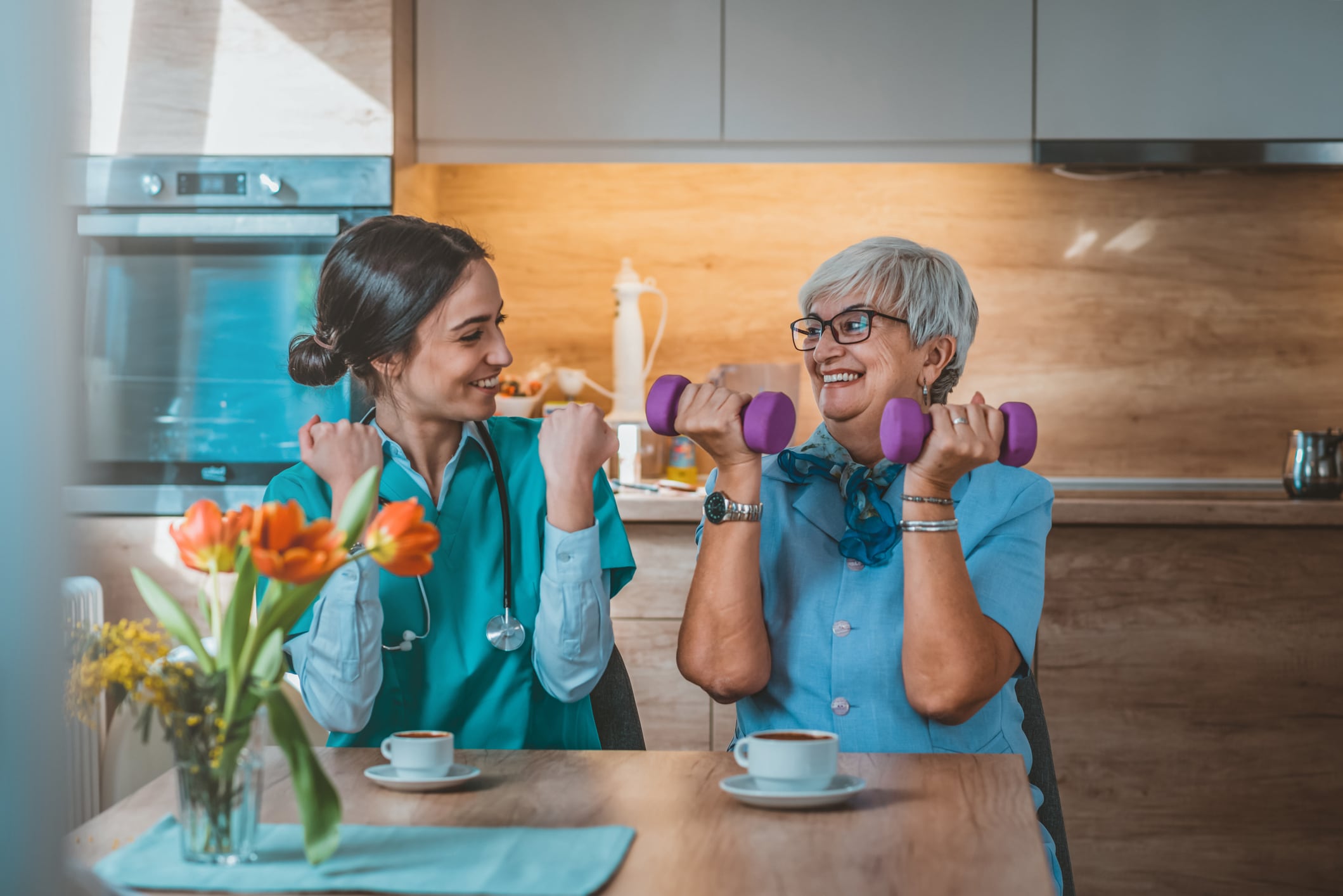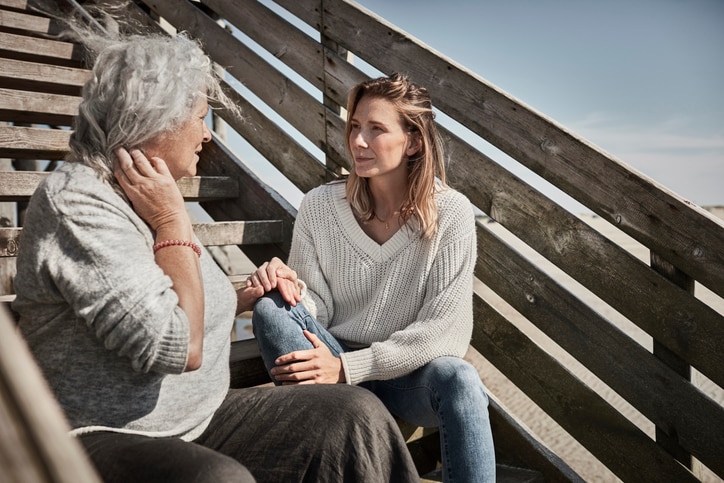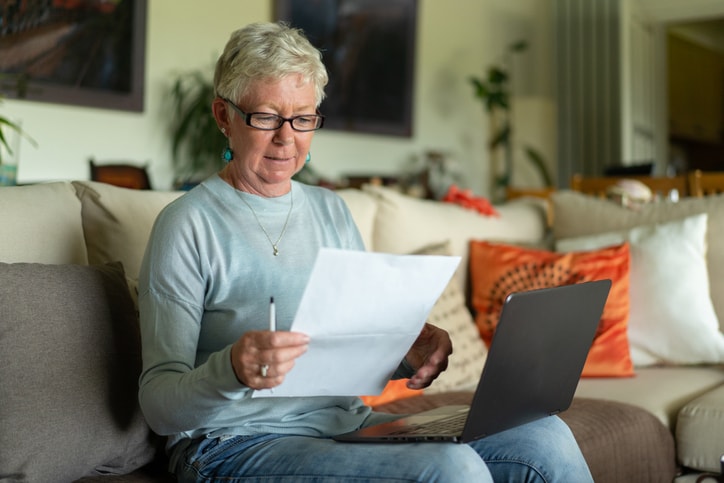As news of the coronavirus pandemic began sweeping the United States in early 2020, Kirstin Johnson-Nixon quickly began changing her routine. The mom of three from Minneapolis, Minnesota, was asking her husband Charles, 57, and their sons to make sure they were washing their hands frequently and wearing face masks. Kirstin, 55, a school social worker, was also asking Charles, an assistant principal, to change his clothes as soon as he came home from being with students.
Meanwhile, her mother, Alberta, 87, who has diabetes and high blood pressure, mostly stayed home. But Kirstin’s 87-year-old dad, Willam Johnson — a retired electrical engineer who had heart surgery at the end of March and has diabetes as well as high blood pressure — refused to curb his frequent shopping trips. Her parents were living a mainly independent life, and Johnson wasn’t ready for that to change. “I was like, ‘If you don’t stay out of Sam’s Club, I’m just going to have to come over and take your keys,’” she recalls.
Unfortunately, on May 4, Kirstin learned that William tested positive for COVID-19. The rest of the family soon followed, including Kirstin and her husband’s sons Caleb, 18, Judah, 14 and Raphael, 14. Now, they’re sharing their story to raise awareness about the dangers of COVID-19.
How Johnson-Nixon’s family battled COVID-19
The night before William’s positive test result, he had called his daughter saying that Alberta had fallen. The pair quickly drove 15 minutes outside of Minneapolis to help and realized it was William was the one who needed immediate medical attention.
In the days before, Kirstin recalls her dad had said something like, “Oh, if I didn’t know better, I would have thought I wet myself at night.” “[That’s] because he woke up and was just totally sweaty and just having a really hard time,” she recalls. But then, he would say he was feeling completely fine.
Following her mother’s fall, and her dad’s admission that he had severe diarrhea, Kirstin told her father that he needed to go to the hospital. “He was extremely tired-looking too, and I didn’t know if it was from exhaustion just from what was going on with the heart valve surgery or what was going on with my mom,” she adds.
Kirstin thinks it was likely at least three days before her dad had mentioned to anybody that he was having these symptoms. “He is just one of those old guys who just doesn’t complain a whole lot, so I think that the symptoms must have been alarming even to him for him to mention it,” she says.
Immediately after arriving at the hospital, William was put on high velocity oxygen, and that’s where he remained for 50 days. On day 20, he was put on a ventilator for 12 days. Kirstin says it was hard to hear doctors note that they usually didn’t see people her father’s age survive after being put on a ventilator.
In the meantime, Kirstin’s mother wasn’t having “traditional” COVID-19 symptoms. Instead, she was exhibiting strange behavior. “She was just doing bizarre things that she didn’t normally do, like laughing hysterically,” says Kirstin.
The social worker thought maybe her mom was having trouble regulating her blood sugar. “She didn’t have symptoms, she just had delirium, and then, she wasn’t really able to take care of herself,” she says. But two days after her husband’s diagnosis, Alberta tested positive — as did Kirstin and Charles.
“I got a fever, the body aches, everything,” says Charles. “From that moment on, we were both very, very sick at home.”
As they battled the fluctuating fevers, cough and severe body aches for nearly 14 days, their boys would try to help by bringing food — despite testing positive themselves four days after their parents isolated in their bedroom. “Our biggest concern was that it would turn on us, and we would wind up going into the hospital too,” says Charles.
The couple’s oldest lost his sense of smell for three months, and he still hasn’t gotten it completely back. “And one of our twins, who has asthma, before he got sick barely used his inhaler,” says Charles. “And now unfortunately, he’s at a point where he uses it almost every day, so we have to believe that this is from COVID.”

Like far too many people this past year, Kirstin and Charles quickly became patients who were trying to care for themselves, their sick children and their parents all at once. Kirstin explains that others in her family have a more “selfish” mindset, and this has caused tension as her parents have faced recent health battles. “They kind of feel like, ‘Well, mom and dad have money, so they should use their money to find ways to take care of themselves,’” she says. “But I feel as indebted to my parents as they have been to me throughout my life, and I will do whatever I can to help them. Even though I have a family of my own, I will do whatever is necessary because that’s what I think you’re supposed to do for family.”
Kirstin admits that the combination of everyone being sick and not being able to care for them herself took an emotional toll. “Charles had to keep reminding me, ‘If you don’t take care of yourself, you’re not going to be able to take care of everybody else,’” she says. “But it was really hard to think that I’m not strong enough or able enough to take care of my parents.”
Although her parents did plan and have savings, they are resistant to “spend all of their money” on care. Kirstin was hoping that when her dad came out of the hospital and then transitional care that her parents would agree to move into assisted living.
“My dad listened to all of the virtual tours and said, ‘That’s fine, these places look really great, but I’m going home to my house,’ because all he sees are dollar signs,” she says. “They were saying it was going to be like $10,000 a month to live in this place, and he was like, ‘No way. We are going to get better together, and we’ll be OK.’ So that has been tough.”
And even after recovering from COVID, surviving a near-death experience and now being on portable oxygen, Kirstin’s father still won’t stay in. “I know he’s been out, and he doesn’t take the oxygen with him,” she says. “I tell him, ‘I can go get you whatever you need or our son is driving, someone can bring you whatever it is you need, you don’t have to go out.’ But he is very hard headed. It’s like dealing with toddlers that have money, a house, and a car… I didn’t think 2-year-olds were that bad.”
The Johnson-Nixons’ powerful message for other families
Although it has been eight months since Kirstin and her husband were diagnosed, they are still experiencing lingering symptoms and consider themselves “COVID long haulers.” But instead of keeping their family’s experience private, the pair are dedicated to raising awareness — especially after seeing just how many people are still ignoring the importance of mask wearing and social distancing.
This summer, the couple discussed the disease at a virtual town hall sponsored by the African American Leadership Forum. Charles participated in a webinar with the Alpha Phi Alpha chapter of his alma mater, North Carolina Central University. Kirstin has spoken to a group of fellow school social workers about her experience, and she has plans to attend another event in the spring at the state Capitol.
The reason they’re sharing all the details, according to Charles: “There’s still so many people, and not just in our personal lives but in our professional lives too, that still don’t take this seriously.”
He continues, “And by the grace of God, we didn’t die, but there’s way too many people that still don’t believe that this thing is something more than just a flu. So it’s important for us to speak out about this every chance we get, every platform that we can, to let people know that this is real.”
As they’ve fought to raise awareness, case numbers have been spiking across the country — especially in the Black community. According to a Kaiser Health News analysis of information from the Centers for Disease Control and Prevention (CDC), Black Americans ages 65 to 74 died of COVID-19 five times as often as white adults of the same age.
“I think the Black community has been hit the hardest because of the history of disparities in the Black community,” says Charles. “Our healthcare is not as accessible in our communities, we have much distrust of the healthcare system and hospitals and just those issues, in and of themselves, make us very vulnerable to something like this.”
Kirstin also attributes disproportionate case numbers to an economic issue. “I think that a lot of Black people that are trying to care for their families have to go to work every day, and they might not have the time to stop and even see if they are actually sick or not because they have to go in or else they don’t get paid,” she says. “So it’s really tough when you’re an essential worker.”
The downstream effect the family hopes to create
Since making it their mission to empower other families and raise awareness, the pair say that the feedback has been mainly positive. Kirstin also hopes that by speaking out, she’s helping to break the stigma associated with a coronavirus diagnosis that has prevented some from sharing their own experiences.

“People feel kind of shameful about getting it, like you’ve done something horribly wrong if you come out and speak out about it,” she says. “I’ve had some people say, ‘You guys are better than me because I wouldn’t put all of my business in the street like that,’ but this is a real thing. It’s a public health thing, and people need to know that when you have it and that you can die from it.”
The couple hopes that adult children and caregivers of seniors share their story with their loved ones in order to convince them to just stay home and accept help. “This is the part where we talk about ‘tough love’ with our kids,” says Charles. “You have to do the tough love with parents, and you have to say, ‘Let us know what you need. We will get it for you or have it delivered for you.’”
But if your loved ones are anything like Kirstin’s parents, Charles warns it’s not going to be an easy battle. But you can’t give up on trying to get them to accept this new reality. “That’s the hard part because that generation, they’re not the kind that asks for help, they weren’t the kind that wanted help and they haven’t needed up until this point,” he says. “So now, when we say, ‘Let us help you,’ it’s hard for them, but that’s the big thing that we have to drive home: Let us help you, so we can make sure that you’re going to be here with us in the years to come.”





